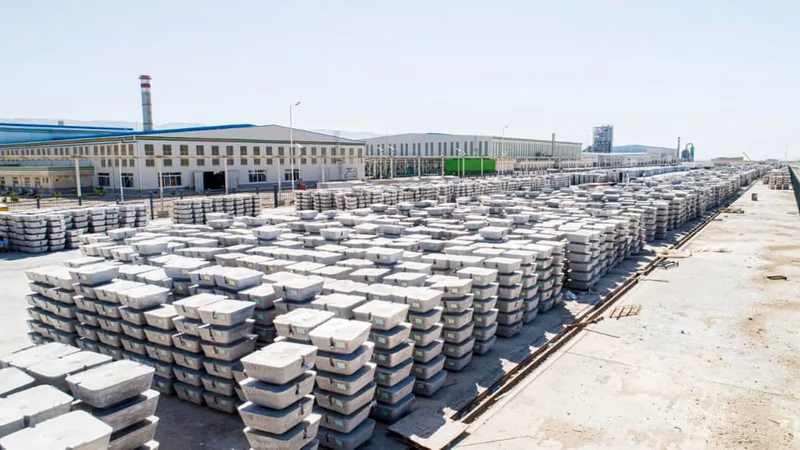
Diverse aluminum products including sheets, extrusions, and rods.
Aluminum sheets and plates are flat, thin forms of aluminum. They are widely used in consumer applications such as construction, automotive, electronics, packaging, and household products. Sheets and plates provide versatility and can be easily cut, shaped, formed, or fabricated to meet specific design and functional requirements. Aluminum extrusions are profiles with complex cross-sectional shapes that are created by extruding molten aluminum through a shaped die. Extrusions offer flexibility in design and are used in various consumer applications, including window frames, door frames, curtain walls, furniture, shelving, and decorative trims. Extrusions provide strength, lightweight construction, and the ability to create customized shapes.
Aluminum bars and rods are solid, cylindrical forms of aluminum. They are used in various consumer applications, including construction, automotive, machinery, and DIY projects. Bars and rods provide strength, rigidity, and versatility for structural support, fabrication, and component manufacturing. Engineered aluminum profiles and systems are designed for specific consumer applications, such as aluminum framing systems, modular structures, display systems, and architectural elements. These ready-to-use systems offer ease of assembly, customization, and compatibility with various components, making them ideal for consumer-oriented projects.
- What is an ingot?
The length of this product is less than 2 meters and its dimensions are optimized for transporting steel and storing it. Its transverse cross-sectional shape is trapezoidal. - What is a billet?
unlike ingots, is long and its cross-sectional area is a circle or square with a width of less than 15 cm (or a cross-sectional area of fewer than 230 cm2). The billet is obtained by direct casting, extrusion (extrusion), or by rolling ingots. Billets are mostly used to produce rebars and wires. - What is Bloom?
Bloom: If the width of the billet is more than 15 cm (or the cross-section is more than 230 cm2), it is called bloom, and for this reason, usually these two products are in one category (Bloom and Billet). Bloom is used to making rails, beams, cans, studs, shields, and so on. - What is a slab?
Slab cross-section, unlike bloom and billet, is not square but rectangular (usually 230 mm thick, 1.25 m wide, and 12 mm long). Slabs are used to make steel sheets, plates, and so on.
Note: Today, the technologies used in manufacturing the steel products in the later stages of obtaining molten steel, i.e. casting and rolling, are more or less the same. But to obtain molten or crude steel, various technologies can be used, including blast furnace (BF), arc furnace (EAF), and induction furnace (IMF) methods. Although most of the crude steel production in the world is produced by the blast furnace method, for various reasons, the use of the electric furnace method, especially in Iran, is more justifiable.
- Aluminum Sheets and Plates:
Flat, thin sheets or plates of aluminum used in various applications, including construction, automotive, aerospace, and packaging. Available in different thicknesses, widths, and lengths to accommodate specific requirements. - Aluminum Extrusions:
Aluminum profiles created by extruding molten aluminum through a shaped die. Used in applications such as architectural structures, window frames, door frames, curtain walls, and industrial machinery. - Aluminum Tubes and Pipes:
Hollow cylindrical aluminum products used in applications such as plumbing, HVAC systems, structural supports, and transportation industries. Available in various sizes, shapes, and wall thicknesses to suit specific needs. - Aluminum Foil:
Thin, flexible sheets of aluminum used for packaging, insulation, cooking, and other purposes. Offers excellent barrier properties, heat conductivity, and malleability. - Aluminum Bars and Rods:
Solid, cylindrical aluminum products used in various industries, including construction, transportation, and manufacturing. Available in different shapes (round, square, hexagonal) and sizes for diverse applications. - Aluminum Wire and Cable:
Electrical conductors made of aluminum used in power transmission, distribution systems, electrical wiring, and other electrical applications. Can be bare or insulated, depending on the specific requirements. - Aluminum Castings:
Aluminum components produced through the casting process, where molten aluminum is poured into a mold and allowed to solidify. Used in automotive, aerospace, machinery, and other industries where complex shapes and designs are required. - Aluminum Composite Panels (ACPs):
Sandwich panels consisting of two thin aluminum sheets bonded to a non-aluminum core (usually a plastic material). Widely used in building facades, signage, interior decoration, and other architectural applications. - Aluminum Profiles and Systems:
Engineered aluminum systems designed for specific applications, such as aluminum framing systems, modular structures, and industrial frameworks. Offer versatility, strength, and ease of assembly. - Aluminum Wheels and Rims:
Lightweight aluminum wheels used in automotive and transportation industries for vehicles' aesthetics, performance, and fuel efficiency.
Aluminum foil is a thin, flexible sheet of aluminum. It is commonly used in consumer applications such as packaging, cooking, baking, and insulation. Foil provides excellent barrier properties against moisture, light, and gases, making it ideal for preserving and protecting food, as well as for heat transfer in cooking and baking. Aluminum tubes and pipes are hollow cylindrical forms of aluminum. They find applications in consumer industries such as plumbing, HVAC systems, furniture, recreational equipment, and transportation. Tubes and pipes offer lightweight construction, corrosion resistance, and the ability to transport fluids, gases, or provide structural support.
-
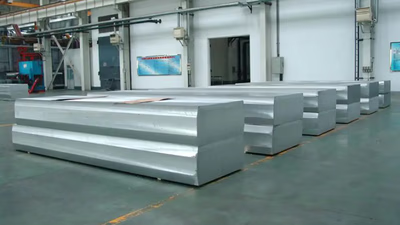
Aluminum slabs are thick, rectangular blocks produced through casting, serving as essential input for rolling mills. These slabs are rolled into thinner sheets or coils for various industries, including construction, automotive, and packaging. Their properties, such as lightweight and corrosion resistance, make them versatile for tooling applications and structural components. In the Middle East, aluminum slabs play a crucial role in steel production, particularly in manufacturing billets and slabs used in various steel products. The production process often involves electric furnaces, especially in Iran. Aluminum slabs are also integral to creating heat exchangers and can be further processed into extrusion billets for complex profiles used in architectural applications. The adherence to international standards ensures high quality and marketability of these products globally.
-
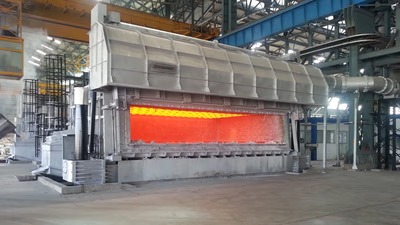
Aluminum features a face-centered cubic crystalline structure, providing strength and stability through metallic bonds. Its lightweight nature, combined with high strength, makes it comparable to steel in certain alloys. Aluminum"s natural oxide layer forms upon exposure to air, offering excellent corrosion resistance and self-repair capabilities. The metal is highly ductile and malleable, allowing for various manufacturing processes such as rolling and shaping into sheets or complex structures. Additionally, aluminum exhibits superior thermal and electrical conductivity, making it ideal for applications in heat exchangers and electrical wiring. Its recyclability is a significant advantage, requiring less energy than primary production while maintaining its properties. Overall, aluminum"s unique characteristics make it a versatile material in numerous industries.
-
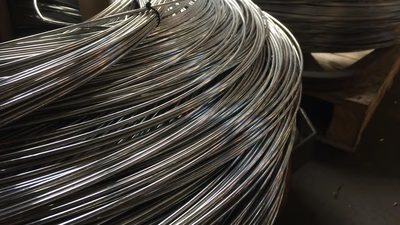
Aluminum wire serves as a cost-effective alternative to copper wire, primarily due to its lower production costs and abundance. Its lightweight nature simplifies handling and installation, making it ideal for large-scale electrical projects like power transmission lines. Aluminum wire is widely utilized in overhead power transmission and distribution systems, aerospace applications, and industrial settings. Despite having approximately 61% of copper"s conductivity, aluminum wire remains a reliable choice for various electrical applications when installed according to safety standards. The material"s thermal conductivity allows for efficient heat dissipation, while its availability from numerous suppliers ensures consistent access for projects. However, the use of aluminum wire in residential wiring has declined due to concerns about thermal expansion and connection reliability. Local electrical codes may impose specific requirements on aluminum wire usage, necessitating consultation with professionals for safe installations. Overall, aluminum wire"s advantages include cost-effectiveness, lightweight properties, and compatibility with other aluminum components in electrical systems. "
-
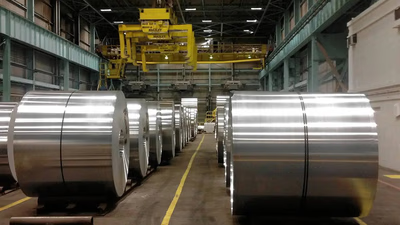
Aluminum foil is a versatile, thin sheet made from aluminum metal, known for its excellent barrier properties against moisture, light, and oxygen. This makes it ideal for preserving food freshness and quality. Its good thermal conductivity allows for even heat distribution in cooking and baking applications. The malleability of aluminum foil enables it to be easily shaped and wrapped around various objects, making it convenient for packaging and sealing. Additionally, its lightweight nature contributes to fuel efficiency during transport. Aluminum foil is also highly reflective, enhancing thermal insulation in construction and HVAC systems. Beyond food-related uses, it finds applications in electronics for shielding against electromagnetic interference and in the medical field for packaging pharmaceuticals. The production process involves refining aluminum ore into alumina before converting it into pure metal through the Hall-Heroult Process.
Notably, aluminum is 100% recyclable without losing its properties, saving significant energy compared to primary production methods. Aluminum foil"s diverse applications span from household projects to industrial uses in aerospace and construction. "
-
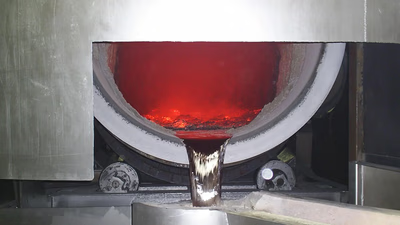
Aluminum is a lightweight, silvery-grey metal with the atomic number 13, known for its high strength and corrosion resistance. It is the most abundant metallic element in Earth"s crust, primarily extracted from bauxite ore. The extraction process involves refining bauxite to obtain alumina, which is then reduced electrolytically to produce aluminum metal. Aluminum"s low density makes it ideal for various applications across multiple industries, including transportation, construction, and packaging. Its excellent conductivity and recyclability further enhance its appeal as a sustainable material. Aluminum can be alloyed with other elements to improve specific properties such as strength and heat resistance, making it crucial in engineering applications like aircraft and rockets. Additionally, aluminum"s natural oxide layer provides protection against corrosion, allowing it to perform well in harsh environments. Its versatility extends to consumer products and electrical wiring, solidifying its status as one of the most important engineering materials today. "
-

Aluminum is a naturally occurring element and is not classified as toxic like lead or mercury. It is the third most abundant element in the Earth"s crust, and humans are exposed to small amounts through food, water, air, and medications. Regulatory bodies like the WHO and FDA have set guidelines for safe aluminum exposure. While small quantities are generally safe, excessive exposure can lead to health issues, particularly in occupational settings where airborne aluminum dust is prevalent. Prolonged exposure may result in respiratory problems and other health concerns. There are ongoing debates regarding aluminum"s potential link to neurological disorders such as Alzheimer"s disease; however, current research does not support a direct connection between everyday aluminum exposure and these conditions. Individuals with impaired kidney function may be at higher risk for aluminum accumulation, necessitating caution regarding exposure levels. Overall, while aluminum can pose risks at high concentrations or prolonged exposure, everyday contact through common sources is typically considered safe for most individuals. "
-
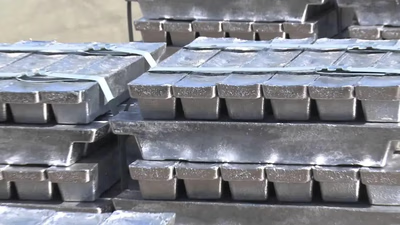
Aluminum prices are influenced by supply and demand, production costs, and global economic conditions. Factors such as mining availability, recycling, and geopolitical events can disrupt supply and lead to price fluctuations. Aluminum ingots, typically rectangular or cylindrical, serve as raw materials for various industries including automotive, aerospace, and construction. They can be alloyed with elements like copper or magnesium to enhance properties such as strength and corrosion resistance. The recycling of aluminum is energy-efficient, requiring only 5% of the energy needed for primary production. Different types of aluminum ingots include bullion (50-pound and 1000-pound), slabs, T-bar ingots, and billets, each serving specific industrial applications. The price of aluminum is also affected by market conditions, exchange rates, and the purity of the alloys used. As of recent data, aluminum is priced at $2,614. 67 per tonne.
-

Aluminum products are diverse and widely used across various industries. Aluminum sheets and plates serve as flat, thin forms ideal for construction, automotive, and packaging applications due to their versatility. Aluminum extrusions, created by forcing molten aluminum through a die, allow for complex shapes used in window frames and furniture. Solid aluminum bars and rods provide strength for structural support in construction and manufacturing. Engineered aluminum profiles are designed for specific applications like modular structures and display systems, offering ease of assembly. Other forms include aluminum tubes and pipes for plumbing and HVAC systems, aluminum foil for packaging and insulation, and aluminum castings for intricate designs in automotive and aerospace sectors. Each type of aluminum product has unique properties that cater to different functional requirements, making them essential in modern manufacturing.
-
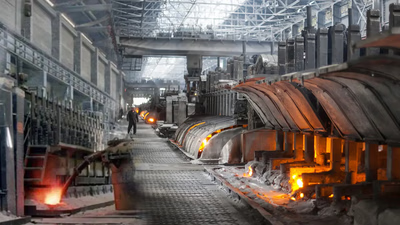
Ribbed aluminum foil, also known as embossed aluminum foil, features a textured surface created through a specialized rolling process. This unique pattern enhances heat transfer capabilities, making it ideal for applications in heat exchangers and thermal insulation. The raised ribs also facilitate moisture management, which is beneficial for packaging perishable goods and controlling condensation in industrial processes. Additionally, ribbed aluminum foil serves as an effective sound and vibration dampening material, commonly used in automotive interiors and acoustic panels. Its anti-friction properties reduce wear in sliding mechanisms and machinery. The thickness of ribbed aluminum sheets ranges from 1. 5 to 10 mm, allowing them to be easily shaped for various uses. Applications extend to construction elements like guardrails and flooring, as well as decorative purposes in crafts and packaging.
The textured surface provides improved grip, making it suitable for non-slip applications in food service and automotive sectors. Overall, ribbed aluminum foil is versatile with numerous industrial and creative uses.
-
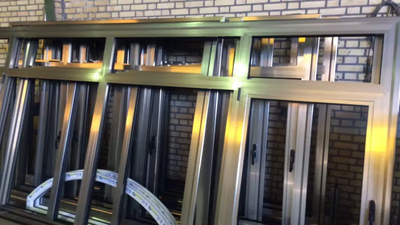
Aluminum is a versatile material widely used across various industries due to its lightweight, strength, and corrosion resistance. In the automotive sector, it enhances fuel efficiency and performance by reducing vehicle weight. The aerospace industry relies on aluminum for aircraft structures, while trains and ships utilize it to improve energy efficiency. In construction, aluminum is favored for its durability in buildings, bridges, and other structures. Its applications extend to electrical wiring due to high conductivity and in consumer goods like cans and kitchen utensils. Aluminum"s role in heat exchangers and electrical components further underscores its importance in HVAC systems and power transmission. The material"s recyclability also contributes to its demand in packaging and insulation. Overall, aluminum"s unique properties make it essential for modern manufacturing processes across multiple sectors. "
-
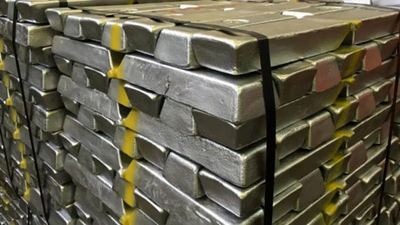
The naming of aluminum alloys is based on their alloying elements, proportions, and specific characteristics. Aluminum alloys are categorized into series, each defined by a primary alloying element. For instance, Series 1xxx consists of nearly pure aluminum, while Series 2xxx features copper as the main element. Each series is assigned a numeric designation that provides further details about the alloy"s composition and properties. Additional suffixes may indicate specific treatments or characteristics, such as strain-hardening or annealing processes. The ANSI and AA naming systems standardize these designations, ensuring clarity in communication among engineers and manufacturers. Understanding these naming conventions is crucial for selecting the appropriate alloy for various applications in industries such as construction, automotive, and aerospace. This knowledge aids in identifying the right materials for specific requirements and promotes effective supply chain solutions within the Middle East trade platform. "
-
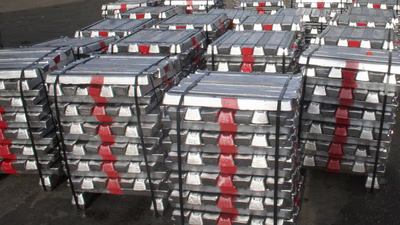
Aluminum ingot prices are primarily influenced by the balance of supply and demand, which is affected by economic growth, industrial production, and global consumption patterns. During economic upturns, demand for aluminum rises in sectors like construction and automotive, leading to higher prices. Conversely, economic downturns can reduce demand and lower prices. The cost of raw materials, particularly bauxite and energy prices, also plays a crucial role in determining ingot prices. Energy costs are significant due to the energy-intensive nature of aluminum smelting. Additionally, factors such as the size and dimensions of ingots, alloy types, thickness, final weight, and currency exchange rates further influence pricing. Trade policies including tariffs and import/export restrictions can disrupt supply chains and affect market dynamics. Market speculation also introduces volatility in short-term price fluctuations. Understanding these factors is essential for stakeholders in the aluminum industry to navigate pricing strategies effectively.












